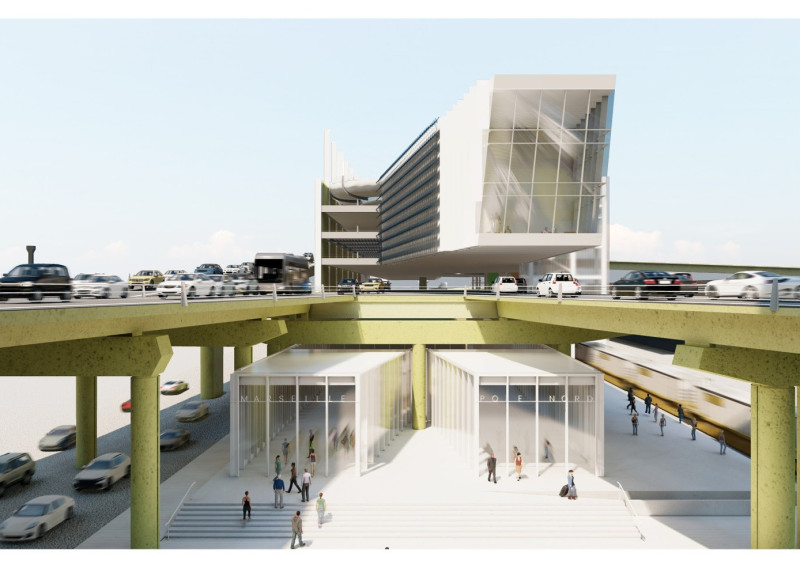5 key facts about this project
At its core, the project reflects a commitment to sustainability and innovative use of space. The design incorporates an open-plan layout, promoting fluid movement between different functional areas. This approach not only enhances the usability of the interior but also fosters a sense of community among its occupants. Key spaces might include multifunctional areas that can easily be reconfigured for various events or routines, highlighting the adaptability of the design.
The materiality of the project plays a crucial role in conveying its architectural identity. A careful selection of materials—such as reinforced concrete, glass, wood, and steel—underscores the project’s commitment to durability and aesthetic appeal. For instance, the use of glass allows for natural light to penetrate deep within the interior spaces, thereby reducing reliance on artificial lighting and enhancing the overall atmosphere. Wood elements, strategically placed, contribute warmth and texture, creating a welcoming environment. In contrast, the robust nature of steel and concrete ensures structural integrity and longevity, aligning with contemporary architectural trends that prioritize both form and function.
Uniquely, the project explores design ideas that prioritize the user experience. Considerations for acoustics, ventilation, and natural light are evident throughout the design. The layout of interior spaces is likely arranged to optimize views and minimize noise pollution, an essential aspect that contributes to a comfortable living or working environment. Outdoor spaces are also thoughtfully integrated, providing areas for relaxation and social interaction, further enhancing the project's functionality.
Innovative elements such as green roofs or living walls may be a part of the design, representing a proactive approach to environmental challenges. These features not only serve aesthetic purposes but also contribute to biodiversity and improve air quality. Additionally, the incorporation of renewable energy systems, like solar panels, reflects a forward-thinking attitude towards energy efficiency, ensuring that the project is as sustainable as it is practical.
The architectural details, from the choice of colors to the finishes applied, collectively define the project's character. Subtle detailing in the joinery and fixture selections complements the overall design philosophy, inviting users to engage not just with the space but with the craftsmanship itself.
Overall, this architectural project stands as a testament to modern design principles that blend aesthetics, functionality, and sustainability. It invites exploration into the intricacies of its architectural plans, sections, and overall design strategies. For those interested in a deeper understanding of the architectural ideas that shaped this project, reviewing the detailed architectural presentations will provide valuable insights into its thoughtful execution and innovative vision.























